Page Summary
-
ML Kit's Digital Ink Recognition API recognizes handwritten text and gestures, converting them into digital format, comparable to the technology used in Gboard and Google Translate.
-
This API enables on-screen writing in various languages, using gestures for text editing, and recognizing hand-drawn shapes and emojis, all without an internet connection.
-
It supports over 300 languages and 25+ writing systems, along with gesture classification and emoji recognition, functioning by processing stroke data of user input.
-
Developers can integrate this feature to allow users to write with styluses or fingers, replacing or supplementing traditional keyboard input for a more natural and versatile user experience.
With ML Kit's digital ink recognition API, you can recognize handwritten text and classify gestures on a digital surface in hundreds of languages, as well as classify sketches. The digital ink recognition API uses the same technology that powers handwriting recognition in Gboard, Google Translate, and the Quick, Draw! game.
Digital ink recognition allows you to:
- Write on the screen instead of typing on a virtual keyboard. This lets users draw characters that are not available on their keyboard, such as ệ, अ or 森 for latin alphabet keyboards.
- Perform basic text operations (navigation, editing, selection, and so on) using gestures.
- Recognize hand‑drawn shapes and emojis.
Digital ink recognition works with the strokes the user draws on the screen. If you need to read text from images taken with the camera, use the Text Recognition API.
Digital ink recognition works fully offline and is supported on Android and iOS.
Key Capabilities
- Converts handwritten text to sequences of unicode characters
- Runs on the device in near real time
- The user's handwriting stays on the device, recognition is performed without any network connection
- Supports 300+ languages and 25+ writing systems, see the
complete list of supported languages
- Supports gesture classification for these languages via
-x-gestureextensions
- Supports gesture classification for these languages via
- Recognizes emojis and basic shapes
- Keeps on-device storage low by dynamically downloading language packs as needed
The recognizer takes an Ink object as input. Ink is a vector representation
of what the user has written on the screen: a sequence of strokes, each being
a list of coordinates with time information called touch points. A stroke
starts when the user puts their stylus or finger down and ends when they lift it
up. The Ink is passed to a recognizer, which returns one or more possible
recognition results, with levels of confidence.
Examples
English handwriting
The image on the left below shows what the user drew on the screen. The image on
the right is the corresponding Ink object. It contains the strokes with red
dots representing the touch points within each stroke.
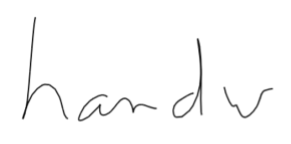
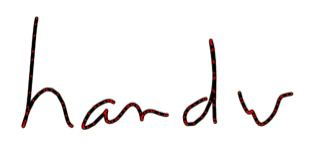
There are four strokes. The first two strokes in the Ink object look like
this:
| Ink | ||
|---|---|---|
| Stroke 1 | x
|
392, 391, 389, 287, ... |
y
|
52, 60, 76, 97, ... | |
t
|
0, 37, 56, 75, ... | |
| Stroke 2 | x
|
497, 494, 493, 490, ... |
y
|
167, 165, 165, 165, ... | |
t
|
694, 742, 751, 770, ... | |
| ... | ||
When you send this Ink to a recognizer for the English language, it returns
several possible transcriptions, containing five or six characters. They are
ordered by decreasing confidence:
| RecognitionResult | |
|---|---|
| RecognitionCandidate #1 | handw |
| RecognitionCandidate #2 | handrw |
| RecognitionCandidate #3 | hardw |
| RecognitionCandidate #4 | handu |
| RecognitionCandidate #5 | handwe |
Gestures
Gesture classifiers classify an ink stroke into one of nine gesture classes listed below.
arch:abovearch:below |
 |
caret:abovecaret:below |
 |
circle |
 |
 |
|
scribble |
 |
strike |
 |
verticalbar |
 |
writing |
 |
Emoji sketches
The image on the left below shows what the user drew on the screen. The image on
the right is the corresponding Ink object. It contains the strokes with red
dots representing the touch points within each stroke.
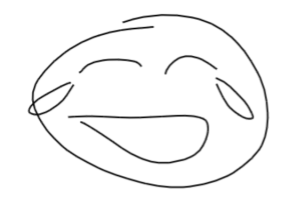
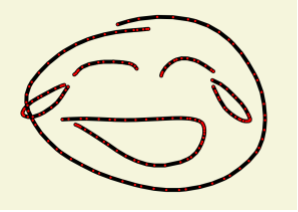
The Ink object contains six strokes.
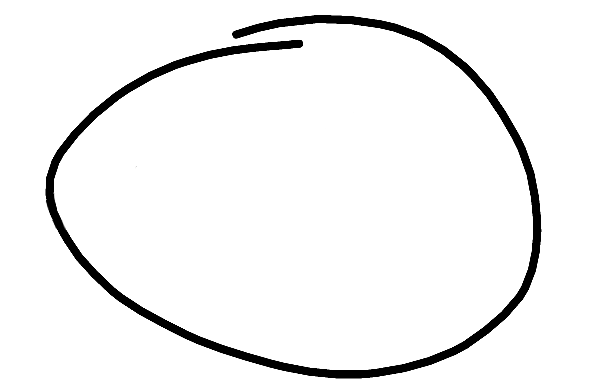


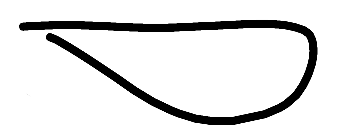

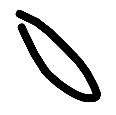
| Ink | ||
|---|---|---|
| Stroke 1 | x
|
269, 266, 262, 255, ... |
y
|
40, 40, 40, 41, ... | |
t
|
0, 36, 56, 75, ... | |
| Stroke 2 | x
|
179, 182, 183, 185, ... |
y
|
157, 158, 159, 160, ... | |
t
|
2475, 2522, 2531, 2541, ... | |
| ... | ||
When you send this Ink to the emoji recognizer, you get several possible
transcriptions, ordered by decreasing confidence:
| RecognitionResult | |
|---|---|
| RecognitionCandidate #1 | 😂 (U+1f62d) |
| RecognitionCandidate #2 | 😅 (U+1f605) |
| RecognitionCandidate #3 | 😹 (U+1f639) |
| RecognitionCandidate #4 | 😄 (U+1f604) |
| RecognitionCandidate #5 | 😆 (U+1f606) |
